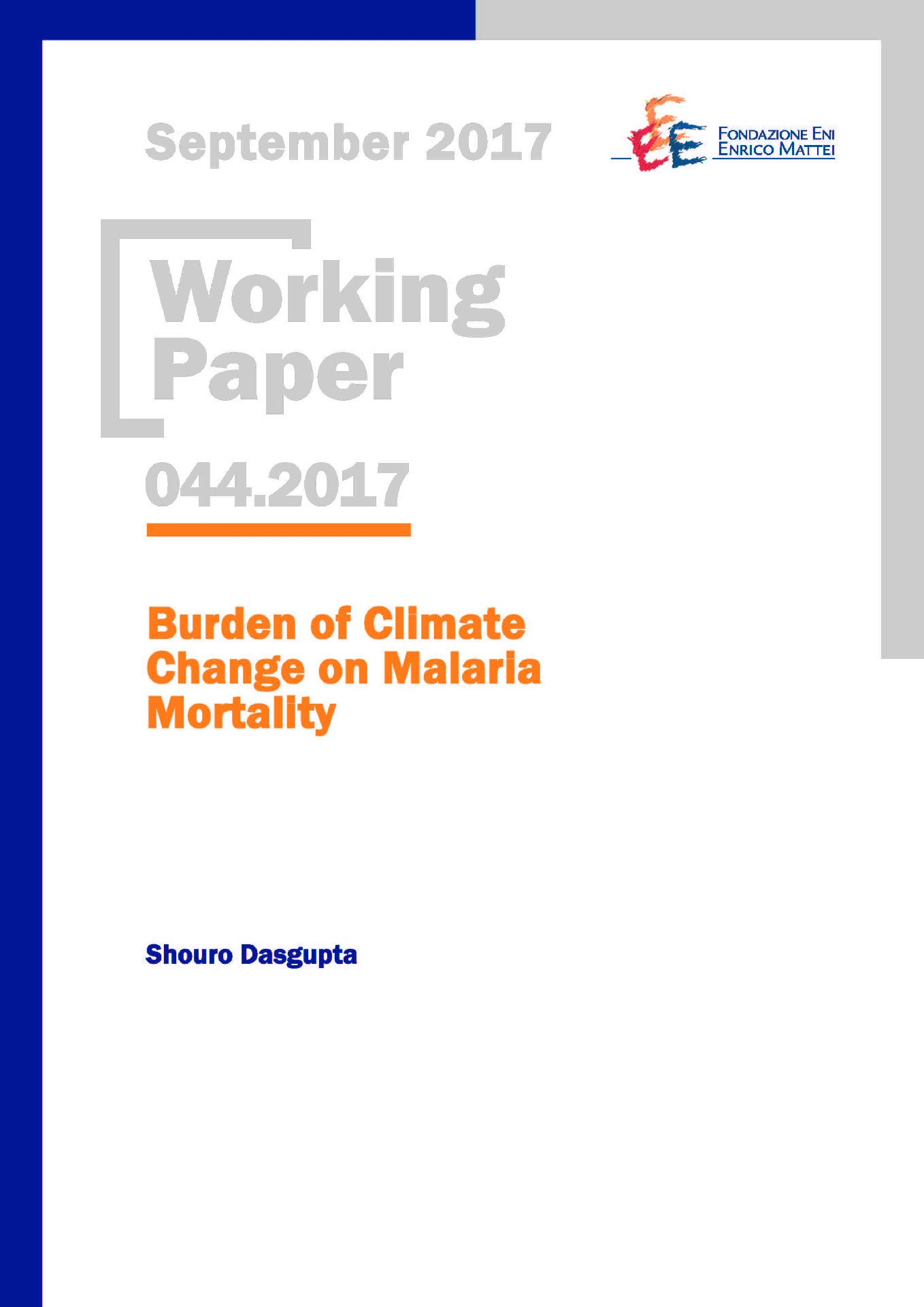Burden of Climate Change on Malaria Mortality

05.09.2017
Shouro Dasgupta (Università Ca’ Foscari, Fondazione Eni Enrico Mattei, CMCC)
C10, C23, Q54, Q56
Climate change, Malaria, Vector borne disease, Temperature, Precipitation
Climate Change: Economic Impacts and Adaptation
Francesco Bosello
In 2015, an estimated 429,000 deaths and 212 million cases of malaria occurred worldwide, while 70% of the deaths occurred in children under five years old. Changes in climatic exposure such as temperature and precipitation makes malaria one of the most climate sensitive outcomes. Using a global malaria mortality dataset for 105 countries between 1980 and 2010, we estimate that the global optimal temperature maximizing all-age malaria mortality is 20.6, lower than previously predicted in the literature. While in the case of child mortality, a significantly lower optimum temperature of 19.3° is estimated. Our results also suggest that in Africa and Asia, the continents where malaria is most prevalent malaria, mortality is maximized at 28.4 and 26.3, respectively. Furthermore, we estimate that child mortality (ages 0-4) is likely to increase by up to 20 percent in some areas due to climate change by the end of the 21st century.
***
Suggested citation: Dasgupta, S., (2017), ‘Burden of Climate Change on Malaria Mortality’, Nota di Lavoro 44.2017, Milano, Italy: Fondazione Eni Enrico Mattei
